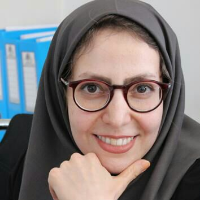Investigating the language of the pattern of historical squares in Yazd region and compiling rules for designing urban squares
Author(s):
Article Type:
Research/Original Article (دارای رتبه معتبر)
Abstract:
The quality of contemporary urban squares based on indigenous lessons is one of the topics considered by the designers and the concerns of the present study. Assuming that the pattern language of historical squares in Yazd region can be recognized, this study aims to apply the pattern language theory to design these squares not only for morphological description, but also for exploring the application in the design of squares as well as redesigning of historical squares. Therefore, using theoretical perspectives and practical experiences on pattern language theory, this article aims to develop a method for recognizing design patterns and use it in extracting design patterns as well as the relationship between patterns to form a network of a pattern language. The basis for recognizing patterns is the historical squares of Yazd region (seven squares including Amirchakhmaq square, Shah square, Khan square, Vaqt al-Sa'eh square, Qala square, Lord Fahadan square and Shah Nematullah Vali Taft square) which are completely Iranian squares. These seven squares have been selected in different scales and functions and from different historical periods, including the Timurid, Safavid and Qajar periods. Six squares are located in the historical context of Yazd and one square is located in the historical context of Taft. The present research is applied-development and has been done by qualitative and historical-comparative method. In the process of reviewing the applied model, including four steps for extracting and recognizing design patterns have been developed. The first step is to experimentally observe and extract field similarities in different contexts. In the second step, the words of the pattern language or design patterns are extracted and the components and levels of the patterns as well as the functional and structural patterns of each are described. The third step is to formulate the relationships between the patterns or the rules of the pattern language, and the fourth step is to formulate general rules for designing urban squares. The most important output patterns include empty courtyard pattern, one-level and two-level color system, enclosed space, rectangular geometry, stepped composition, repetitive element of five- and seven-week arches, orientation, hierarchy, balance and contrast, entrance enclosures are spatial coherence and functional convergence. The result of this research is the development of thirteen rules for designing squares that include unity, hierarchy, proportions, ecology, spatial orientation, balance, spatial contrast, continuity, diversity, identity, universality, populism and simplicity.
Keywords:
Language:
Persian
Published:
Journal of Architecture Hot and dry climate, Volume:9 Issue: 14, 2022
Pages:
181 to 202
magiran.com/p2459742
دانلود و مطالعه متن این مقاله با یکی از روشهای زیر امکان پذیر است:
اشتراک شخصی
با عضویت و پرداخت آنلاین حق اشتراک یکساله به مبلغ 1,390,000ريال میتوانید 70 عنوان مطلب دانلود کنید!
اشتراک سازمانی
به کتابخانه دانشگاه یا محل کار خود پیشنهاد کنید تا اشتراک سازمانی این پایگاه را برای دسترسی نامحدود همه کاربران به متن مطالب تهیه نمایند!
توجه!
- حق عضویت دریافتی صرف حمایت از نشریات عضو و نگهداری، تکمیل و توسعه مگیران میشود.
- پرداخت حق اشتراک و دانلود مقالات اجازه بازنشر آن در سایر رسانههای چاپی و دیجیتال را به کاربر نمیدهد.
In order to view content subscription is required
Personal subscription
Subscribe magiran.com for 70 € euros via PayPal and download 70 articles during a year.
Organization subscription
Please contact us to subscribe your university or library for unlimited access!



